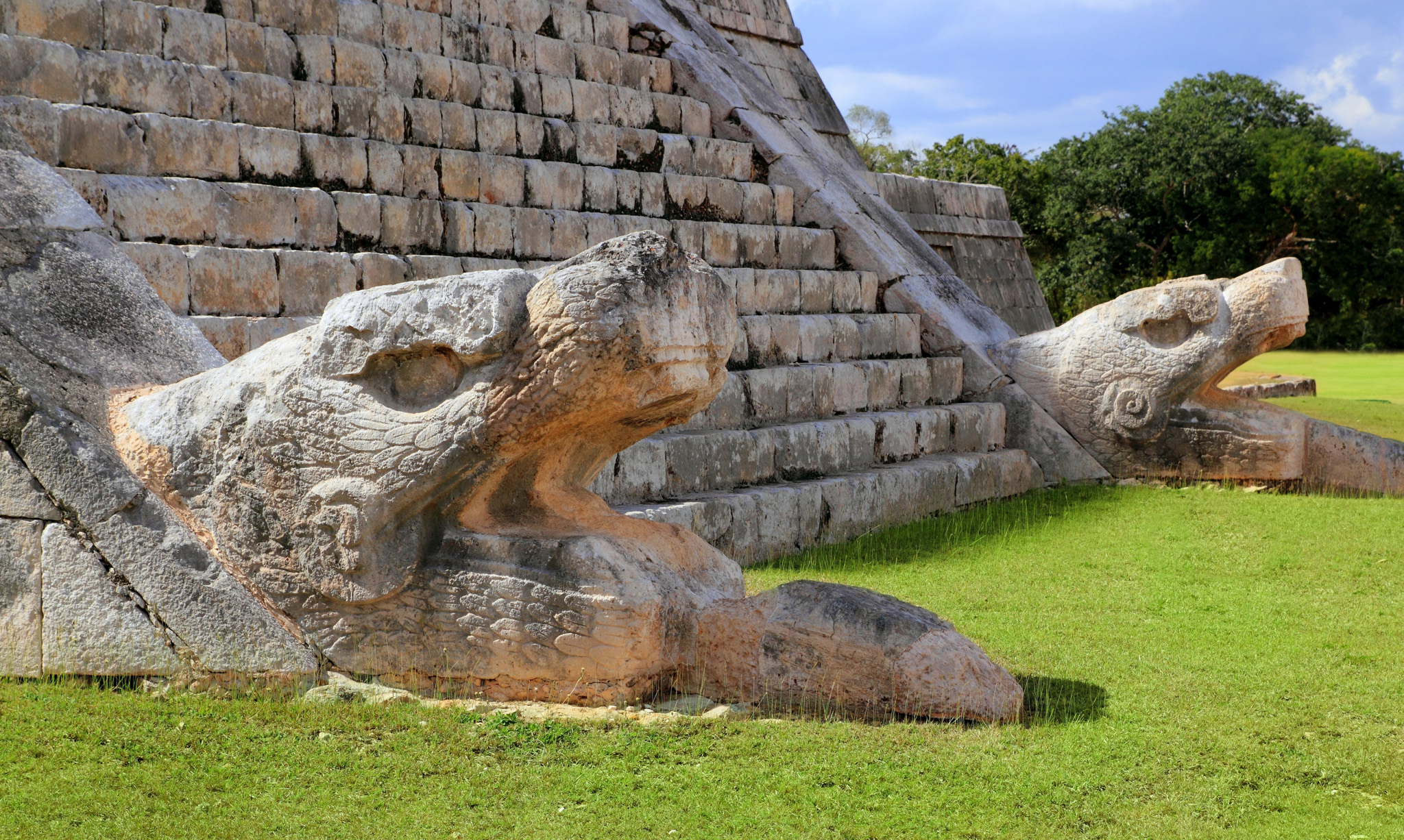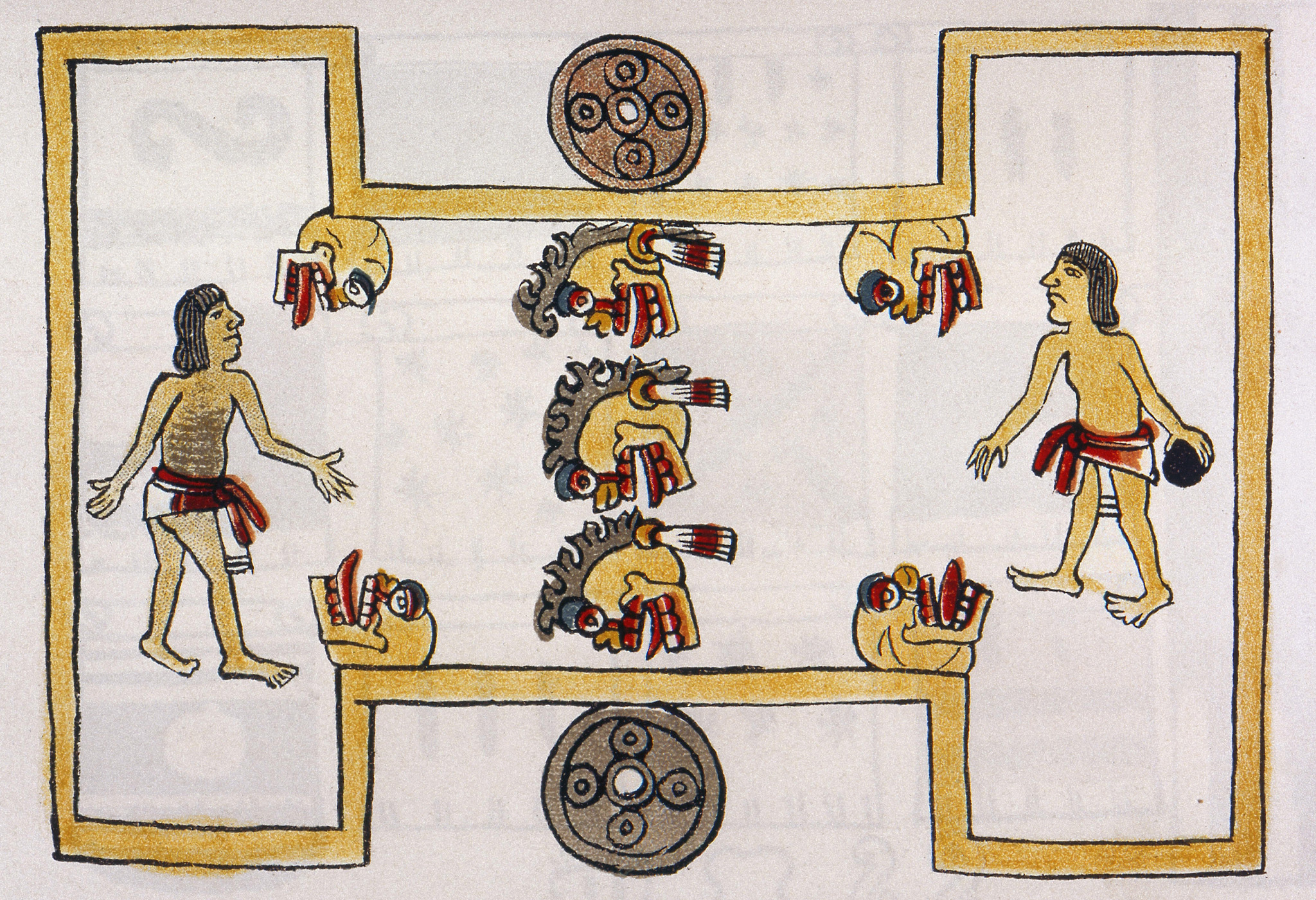CHICHÉN ITZÁ: THE CARVINGS

Map of the Carvings
1. Casa Colorada Inscriptions
These record that Chichén lords celebrated a ritual in September 869 to ensure the city’s prosperity.
2. Chac-Masks of Las Monjas
The curling snout of the rain-god Chac is depicted repeatedly in rows at the Nunnery.
3. Platform of the Jaguars and Eagles
This small platform may have been used for rituals by the warrior Orders of the Jaguars and Eagles. Its carvings show these animals tearing open human victims to eat their hearts.

Platform of the Jaguars and Eagles
4. Chac Mool and Altar of the Red Jaguar
Reclining Chac Mool figures were fallen warriors delivering offerings to the gods, from food and jewels to the hearts of sacrificial victims. The Chac Mool in the temple of the Castillo lies before a painted stone jaguar throne.
5. Temple of the Jaguars
Carved panels in this temple connect the foundation of Chichén Itzá with First Mother and First Father, the creators of the world.
6. Ball Court Frieze
As defeated ball game players have their heads cut off, seven spurts of blood shoot from their necks and transform into vines and flowers.
7. Heads of Kukulcán
The giant feathered serpents at the Castillo probably represented Vision Serpents but they have also been associated with the central Mexican serpent-god Quetzalcoatl.

Heads of Kukulcán at the Castillo
8. Tzompantli
Covered in carved skulls on all four sides, a low platform near the Ball Court was probably used to display the heads of sacrificial victims.
9. Warriors’ Columns
A “picture gallery” of the men of Chichén. Most are of warriors in their battle regalia, but there are also some priests and bound captives.
10. Snails, Armadillos, Turtles, and Crabs
Placed between the Chac-heads on the Iglesia (“church”) at the Nunnery, these animals represented the four spirits that held up the sky at the cardinal points (north, south, east, west) in Mayan mythology.
THE BALL GAME
The ancient Mexican ball game can be traced back to before 1500 BC. It features in Mayan myths such as the story of the hero-twins Hunahpu and Xbalanqué, who play the game with the Lords of Death for days and nights, defying the forces of destiny. There were ball courts in all Mayan cities. No one knows exactly how the game was played, but it is thought that there were two main forms. One was played by two or four players on the older, smaller courts, and the aim was to keep the ball from touching the ground and get it past your opponent(s) and out at the end of the court. The other form corresponded to much bigger courts, such as at Chichén Itzá, and was played by teams of seven who scored in big rings on either side of the court. In either style players could not touch the ball with hands or feet, but only with shoulders, chest and hips, so scoring was very hard. Games had great ritual significance, and sometimes, but not always, losing players were sacrificed to the gods.

The Ball Court Ball courts were found in all the ancient cultures of Mexico and Central America. Though the style and size of the courts varied, they were always I-shaped, as in the Aztec codex illustration below. The game was viewed as symbolic of the cycle of life, and the court represented the world. While games had important religious significance, it is known that men also placed bets on the results.
TOP 10 ANCIENT MAYAN BALL COURTS
1. Monte Albán, Oaxaca
2. Palenque, Chiapas
3. Toniná, Chiapas
4. Uxmal, Yucatán
5. Chichén Itzá, Yucatán
6. Cobá, Quintana Roo
7. Kohunlich, Quintana Roo
8. Calakmul, southern Campeche
9. Tikal, Guatemala
10. Copán, Honduras

A carved stone ring was the hoop through which players had to shoot the ball. It was placed vertically, at 27 ft (8 m) high.
